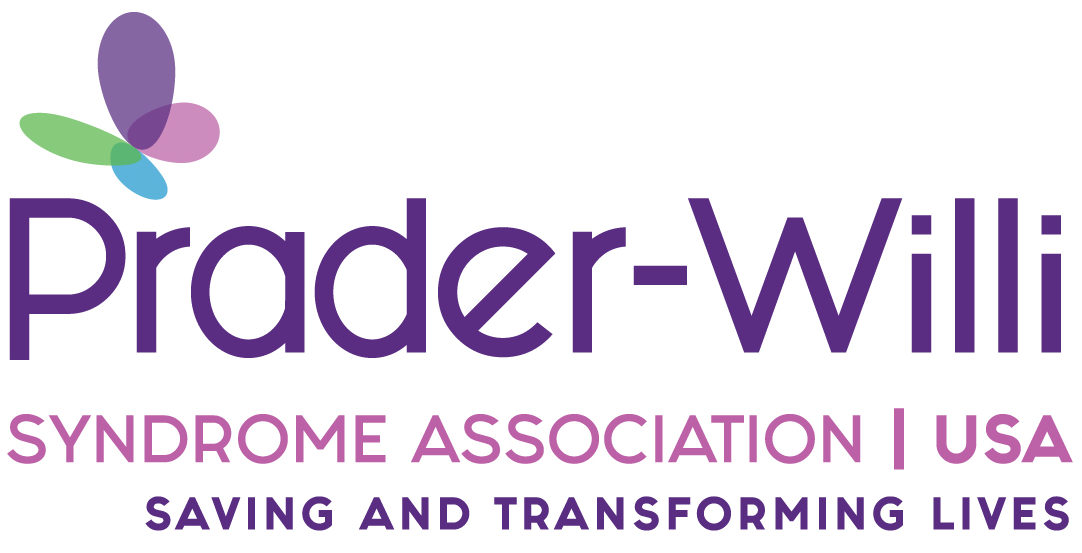PWSA | USA received information from Harmony Biosciences that the company announced positive findings from the Phase 2 study of its drug pitolisant, a treatment for excessive daytime sleepiness (EDS) in people with Prader-Willi syndrome (PWS). The data was presented at the 37th Annual Meeting of the Associated Professional Sleep Societies (APSS).
According to Harmony Biosciences press release announcement, “Notably, both the high- and low-dose pitolisant treatment arms demonstrated greater mean improvement from baseline in the Epworth Sleepiness Scale for Children and Adolescents (ESS-CHAD, Parent / Caregiver version) scores in the overall patient population when compared to placebo. A dose-response was observed with a relatively higher response rate occurring in the high dose pitolisant group compared to the low dose pitolisant group. This proof-of-concept study was not powered to demonstrate statistical significance and was designed for signal detection. Harmony is working with the U.S. FDA to finalize the Phase 3 registrational study design and expects to initiate the study in 2H 2023.”
Harmony Biosciences will also present the Phase 2 data during PWSA | USA’s 37th National Convention in Orlando, Florida from June 21-24, 2023. You can register to attend the Convention through June 9, 2023 by clicking here.
Read Harmony’s full press release announcement below.
—————————————————————————————————————————
On Behalf of Harmony Biosciences
HARMONY BIOSCIENCES ANNOUNCES POSITIVE PHASE 2 SIGNAL DETECTION STUDY EVALUATING PITOLISANT FOR EXCESSIVE DAYTIME SLEEPINESS IN PRADER-WILLI SYNDROME AT SLEEP 2023
Clinically meaningful improvements potentially address unmet medical need for treating excessive daytime sleepiness in patients with PWS
Phase 3 registrational study anticipated in 2H 2023
PLYMOUTH MEETING, PA, JUNE 8, 2023 — Harmony Biosciences Holdings, Inc. (“Harmony”) (Nasdaq: HRMY), a pharmaceutical company dedicated to developing and commercializing innovative therapies for patients with rare neurological diseases, today announced the presentation of safety and efficacy data from a Phase 2 proof-of-concept study evaluating pitolisant for the treatment of excessive daytime sleepiness (EDS) in people with Prader-Willi syndrome (PWS) at the 37th Annual Meeting of the Associated Professional Sleep Societies (APSS). The positive signal supports further development to determine if pitolisant has the potential to address an unmet medical need for people with PWS experiencing EDS.
Notably, both the high- and low-dose pitolisant treatment arms demonstrated greater mean improvement from baseline in the Epworth Sleepiness Scale for Children and Adolescents (ESS-CHAD, Parent / Caregiver version) scores in the overall patient population when compared to placebo. A dose-response was observed with a relatively higher response rate occurring in the high dose pitolisant group compared to the low dose pitolisant group. This proof-of-concept study was not powered to demonstrate statistical significance and was designed for signal detection.
Harmony is working with the U.S. FDA to finalize the Phase 3 registrational study design and expects to initiate the study in 2H 2023.
“The positive signal from our Phase 2 study represents a milestone in our quest to address the unmet medical need surrounding excessive daytime sleepiness in Prader-Willi syndrome, for which there is currently no approved treatment,” said Kumar Budur, M.D., M.S., Chief Medical Officer at Harmony Biosciences. “Given the lack of existing treatment options for people with Prader-Willi syndrome, these findings represent a step forward in our efforts to improve the quality of life of individuals living with this condition and our commitment to rigorously pursuing promising new indications for pitolisant beyond narcolepsy.”
Among the 15,000 – 20,000 Americans living with PWS, more than half of them experience symptoms of EDS. There is currently no FDA-approved treatment for EDS management in people with PWS.
“Prader-Willi Syndrome impacts and imposes challenges on people living with the disease and their entire family making the importance of new clinical advancements difficult to overstate,” said Susan Hedstrom, Executive Director, Foundation for Prader-Willi Research, and Paige Rivard, Chief Executive Officer, Prader-Willi Syndrome Association USA. “As advocates, we witness the remarkable courage, determination, and love within the PWS community. By moving forward clinical research and hastening innovation to address current gaps in treatment, we are hopeful to one day to reduce the symptom burden for those living with PWS and their families so they can continue living even more fulfilling lives.”
Harmony will also present the Phase 2 data during the Prader-Willi Syndrome Association | USA (PWSA | USA) National Convention in Orlando, Florida from June 21-24 as well as at the Foundation for Prader-Willi Research Symposium and Family Conference happening in Denver, Colorado from October 5-7.
Poster 510: Primary Efficacy and Safety Results of a Phase 2 Double-Blind, Placebo-Controlled Proof of Concept, Signal Detection Study of Pitolisant in Prader-Willi Syndrome
The Phase 2 clinical trial was a randomized, double-blind, placebo-controlled study designed to assess the safety and efficacy of pitolisant in people living with PWS. In the trial, eligible patients who were genetically confirmed to have PWS with EDS were enrolled in an 11-week double-blind treatment phase that included a 3-week titration phase and eight weeks of stable dosing. Participants were then randomized (1:1:1) to receive low- or high-dose pitolisant, or a matching placebo based on age (n=65). The primary efficacy endpoint was change from baseline to week 11 in total score for the parent or caregiver version of ESS-CHAD. Summary statistics for the primary efficacy endpoint of change from baseline in total ESS-CHAD score were applied.
Results from the study include:
• Pitolisant demonstrated a clinically meaningful change (defined as a ≥ 2-point improvement on this scale) of 3.7 to 5.5 points across all age groups in both the high- and low-dose treatment arms with the strongest signal observed in the youngest age group (children ages 6-11);
• In two of the three age groups (children and adults), there was a clinically meaningful difference (minimum of 2 points) between pitolisant and placebo, driven by the high dose pitolisant treatment group;
• Most common adverse events included anxiety (11.9% pitolisant; 4.3% placebo), irritability (9.5% pitolisant; 4.3% placebo) and headache (7.1% pitolisant; 4.3% placebo); and
• No Serious Adverse Events (SAE) were reported in the pitolisant group, and one SAE (deep vein thrombosis) was reported in the placebo group.
Pitolisant is marketed as WAKIX® in the U.S. and is FDA approved to treat EDS or cataplexy in adult patients with narcolepsy. Pitolisant is not approved for use in patients with PWS and is currently being evaluated as an investigational agent in this patient population.
About Prader-Willi Syndrome
PWS is an orphan/rare, genetic neurological disorder with many of the symptoms resulting from hypothalamic dysfunction. The hypothalamus is the part of the brain that controls both sleep-wake state stability and signals that mediate the balance between hunger and satiety, resulting in two of the main symptoms in patients with PWS, EDS and hyperphagia (an intense persistent sensation of hunger accompanied by food preoccupations, an extreme drive to consume food, food-related behavior problems, and a lack of normal satiety). Other features include low muscle tone, short stature, behavioral problems, and cognitive impairment. Approximately 15,000 to 20,000 people in the U.S. live with PWS, and over half of them experience EDS.
About WAKIX® (pitolisant) Tablets
WAKIX, a first-in-class medication, is approved by the U.S. Food and Drug Administration for the treatment of excessive daytime sleepiness or cataplexy in adult patients with narcolepsy and has been commercially available in the U.S. since Q4 2019. It was granted orphan drug designation for the treatment of narcolepsy in 2010, and breakthrough therapy designation for the treatment of cataplexy in 2018. WAKIX is a selective histamine 3 (H₃) receptor antagonist/inverse agonist. The mechanism of action of WAKIX is unclear; however, its efficacy could be mediated through its activity at H₃ receptors, thereby increasing the synthesis and release of histamine, a wake promoting neurotransmitter. WAKIX was designed and developed by Bioprojet (France). Harmony has an exclusive license from Bioprojet to develop, manufacture and commercialize pitolisant in the United States.
Indications and Usage
WAKIX is indicated for the treatment of excessive daytime sleepiness or cataplexy in adult patients with narcolepsy.
Important Safety Information
Contraindications
WAKIX is contraindicated in patients with known hypersensitivity to pitolisant or any component of the formulation. Anaphylaxis has been reported. WAKIX is also contraindicated in patients with severe hepatic impairment.
Warnings and Precautions
WAKIX prolongs the QT interval; avoid use of WAKIX in patients with known QT prolongation or in combination with other drugs known to prolong the QT interval. Avoid use in patients with a history of cardiac arrhythmias, as well as other circumstances that may increase the risk of the occurrence of torsade de pointes or sudden death, including symptomatic bradycardia, hypokalemia or hypomagnesemia, and the presence of congenital prolongation of the QT interval.
The risk of QT prolongation may be greater in patients with hepatic or renal impairment due to higher concentrations of pitolisant; monitor these patients for increased QTc. Dosage modification is recommended in patients with moderate hepatic impairment and moderate or severe renal impairment (see full prescribing information). WAKIX is not recommended in patients with end-stage renal disease (ESRD).
Adverse Reactions
In the placebo-controlled clinical trials conducted in patients with narcolepsy with or without cataplexy, the most common adverse reactions (≥5% and at least twice placebo) for WAKIX were insomnia (6%), nausea (6%), and anxiety (5%). Other adverse reactions that occurred at ≥2% and more frequently than in patients treated with placebo included headache, upper respiratory tract infection, musculoskeletal pain, heart rate increased, hallucinations, irritability, abdominal pain, sleep disturbance, decreased appetite, cataplexy, dry mouth, and rash.
Drug Interactions
Concomitant administration of WAKIX with strong CYP2D6 inhibitors increases pitolisant exposure by 2.2-fold. Reduce the dose of WAKIX by half.
Concomitant use of WAKIX with strong CYP3A4 inducers decreases exposure of pitolisant by 50%. Dosage adjustments may be required (see full prescribing information).
H1 receptor antagonists that cross the blood-brain barrier may reduce the effectiveness of WAKIX. Patients should avoid centrally acting H1 receptor antagonists.
WAKIX is a borderline/weak inducer of CYP3A4. Therefore, reduced effectiveness of sensitive CYP3A4 substrates may occur when used concomitantly with WAKIX. The effectiveness of hormonal contraceptives may be reduced when used with WAKIX and effectiveness may be reduced for 21 days after discontinuation of therapy.
Use in Specific Populations
WAKIX may reduce the effectiveness of hormonal contraceptives. Patients using hormonal contraception should be advised to use an alternative non-hormonal contraceptive method during treatment with WAKIX and for at least 21 days after discontinuing treatment.
There is a pregnancy exposure registry that monitors pregnancy outcomes in women who are exposed to WAKIX during pregnancy. Patients should be encouraged to enroll in the WAKIX pregnancy registry if they become pregnant. To enroll or obtain information from the registry, patients can call 1-800-833-7460. The safety and effectiveness of WAKIX have not been established in patients less than 18 years of age.
WAKIX is extensively metabolized by the liver. WAKIX is contraindicated in patients with severe hepatic impairment. Dosage adjustment is required in patients with moderate hepatic impairment.
WAKIX is not recommended in patients with end-stage renal disease. Dosage adjustment of WAKIX is recommended in patients with moderate or severe renal impairment.
Dosage reduction is recommended in patients known to be poor CYP2D6 metabolizers; these patients have higher concentrations of WAKIX than normal CYP2D6 metabolizers.
Please see the Full Prescribing Information for WAKIX for more information.
To report suspected adverse reactions, contact Harmony Biosciences at 1-800-833-7460 or the FDA at 1-800-FDA-1088 or www.fda.gov/medwatch.
About Harmony Biosciences
At Harmony Biosciences, we specialize in developing and delivering treatments for rare neurological diseases that others often overlook. We believe that where empathy and innovation meet, a better life can begin for people living with neurological diseases. Established by Paragon Biosciences, LLC, in 2017 and headquartered in Plymouth Meeting, PA, our team of experts from a wide variety of disciplines and experiences is driven by our shared conviction that innovative science translates into therapeutic possibilities for our patients, who are at the heart of everything we do. For more information, please visit www.harmonybiosciences.com.
Forward Looking Statement
This press release contains forward-looking statements within the meaning of the Private Securities Litigation Reform Act of 1995. All statements contained in this press release that do not relate to matters of historical fact should be considered forward-looking statements, including statements regarding our product WAKIX. These statements are neither promises nor guarantees, but involve known and unknown risks, uncertainties and other important factors that may cause our actual results, performance or achievements to be materially different from any future results, performance or achievements expressed or implied by the forward-looking statements, including, but not limited to, the following: our commercialization efforts and strategy for WAKIX; the rate and degree of market acceptance and clinical utility of WAKIX, pitolisant in additional indications, if approved, and any other product candidates we may develop or acquire, if approved; our research and development plans, including our development activities with Bioprojet and plans to explore the therapeutic potential of pitolisant in additional indications; our ongoing and planned clinical trials; the availability of favorable insurance coverage and reimbursement for WAKIX; the impact of the COVID-19 pandemic, including any current and future variants; the timing of and our ability to obtain regulatory approvals for pitolisant for other indications as well as any of our product candidates, including those we are developing with Bioprojet; our failure to achieve the potential benefits under our 2022 LCA with Bioprojet; our estimates regarding expenses, future revenue, capital requirements and needs for additional financing; our ability to identify additional products or product candidates with significant commercial potential that are consistent with our commercial objectives; our commercialization, marketing and manufacturing capabilities and strategy; significant competition in our industry; our intellectual property position; loss or retirement of key members of management; failure to successfully execute our growth strategy, including any delays in our planned future growth; our failure to maintain effective internal controls; the impact of government laws and regulations; volatility and fluctuations in the price of our common stock; the significant costs and required management time as a result of operating as a public company; the fact that the price of Harmony’s common stock may be volatile and fluctuate substantially; and the significant costs and required management time as a result of operating as a public company. These and other important factors discussed under the caption “Risk Factors” in our Annual Report on Form 10-K filed with the Securities and Exchange Commission (the “SEC”) on February 21, 2023, and our other filings with the SEC could cause actual results to differ materially from those indicated by the forward-looking statements made in this press release. Any such forward-looking statements represent management’s estimates as of the date of this press release. While we may elect to update such forward-looking statements at some point in the future, we disclaim any obligation to do so, even if subsequent events cause our views to change.
Harmony Biosciences Media Contact:
Cate McCanless 202-641-6086 cmccanless@harmonybiosciences.com
Harmony Biosciences Investor Contact:
Luis Sanay, CFA 445-235-8386 lsanay@harmonybiosciences.com





 Jennifer Bolander has been serving as a Special Education Specialist for PWSA (USA) since October of 2015. She is a graduate of John Carroll University and lives in Ohio with her husband Brad and daughters Kate (17), and Sophia (13) who was born with PWS.
Jennifer Bolander has been serving as a Special Education Specialist for PWSA (USA) since October of 2015. She is a graduate of John Carroll University and lives in Ohio with her husband Brad and daughters Kate (17), and Sophia (13) who was born with PWS. Perry A. Zirkel has written more than 1,500 publications on various aspects of school law, with an emphasis on legal issues in special education. He writes a regular column for NAESP’s Principal magazine and NASP’s Communiqué newsletter, and he did so previously for Phi Delta Kappan and Teaching Exceptional Children.
Perry A. Zirkel has written more than 1,500 publications on various aspects of school law, with an emphasis on legal issues in special education. He writes a regular column for NAESP’s Principal magazine and NASP’s Communiqué newsletter, and he did so previously for Phi Delta Kappan and Teaching Exceptional Children. Evan has worked with the Prader-Willi Syndrome Association (USA) since 2007 primarily as a Crisis Intervention and Family Support Counselor. Evans works with parents and schools to foster strong collaborative relationships and appropriate educational environments for students with PWS.
Evan has worked with the Prader-Willi Syndrome Association (USA) since 2007 primarily as a Crisis Intervention and Family Support Counselor. Evans works with parents and schools to foster strong collaborative relationships and appropriate educational environments for students with PWS. Dr. Amy McTighe is the PWS Program Manager and Inpatient Teacher at the Center for Prader-Willi Syndrome at the Children’s Institute of Pittsburgh. She graduated from Duquesne University receiving her Bachelor’s and Master’s degree in Education with a focus on elementary education, special education, and language arts.
Dr. Amy McTighe is the PWS Program Manager and Inpatient Teacher at the Center for Prader-Willi Syndrome at the Children’s Institute of Pittsburgh. She graduated from Duquesne University receiving her Bachelor’s and Master’s degree in Education with a focus on elementary education, special education, and language arts. Staci Zimmerman works for Prader-Willi Syndrome Association of Colorado as an Individualized Education Program (IEP) consultant. Staci collaborates with the PWS multi-disciplinary clinic at the Children’s Hospital in Denver supporting families and school districts around the United States with their child’s Individual Educational Plan.
Staci Zimmerman works for Prader-Willi Syndrome Association of Colorado as an Individualized Education Program (IEP) consultant. Staci collaborates with the PWS multi-disciplinary clinic at the Children’s Hospital in Denver supporting families and school districts around the United States with their child’s Individual Educational Plan. Founded in 2001, SDLC is a non-profit legal services organization dedicated to protecting and advancing the legal rights of people with disabilities throughout the South. It partners with the Southern Poverty Law Center, Protection and Advocacy (P&A) programs, Legal Services Corporations (LSC) and disability organizations on major, systemic disability rights issues involving the Individuals with Disabilities Education Act (IDEA), Americans with Disabilities Act (ADA), and the federal Medicaid Act. Recently in November 2014, Jim retired.
Founded in 2001, SDLC is a non-profit legal services organization dedicated to protecting and advancing the legal rights of people with disabilities throughout the South. It partners with the Southern Poverty Law Center, Protection and Advocacy (P&A) programs, Legal Services Corporations (LSC) and disability organizations on major, systemic disability rights issues involving the Individuals with Disabilities Education Act (IDEA), Americans with Disabilities Act (ADA), and the federal Medicaid Act. Recently in November 2014, Jim retired.